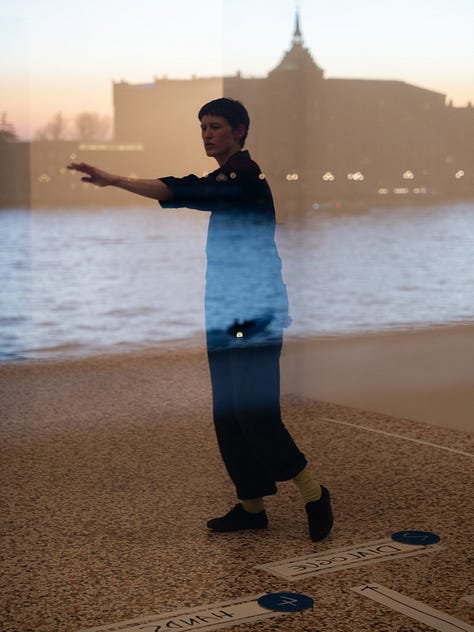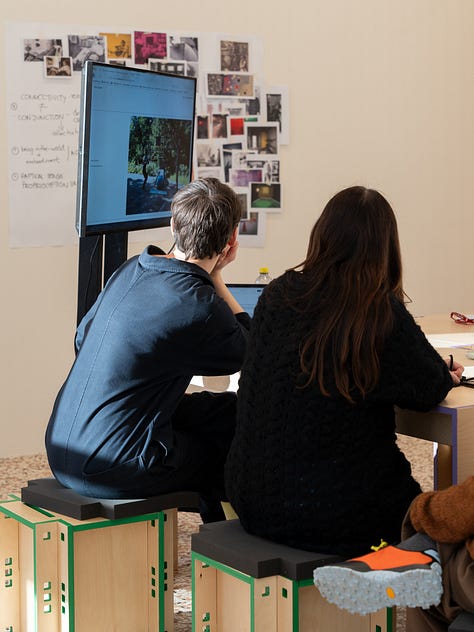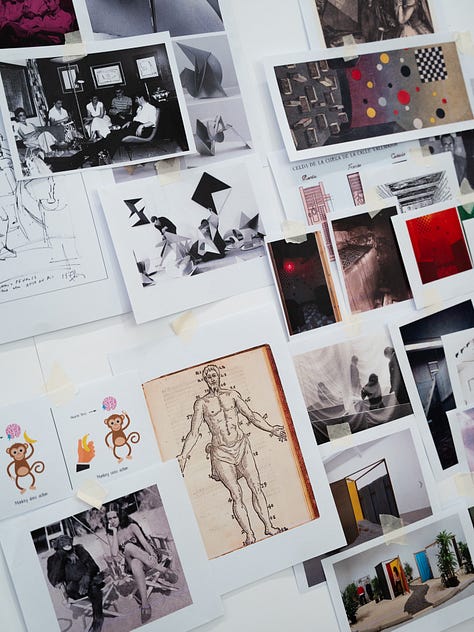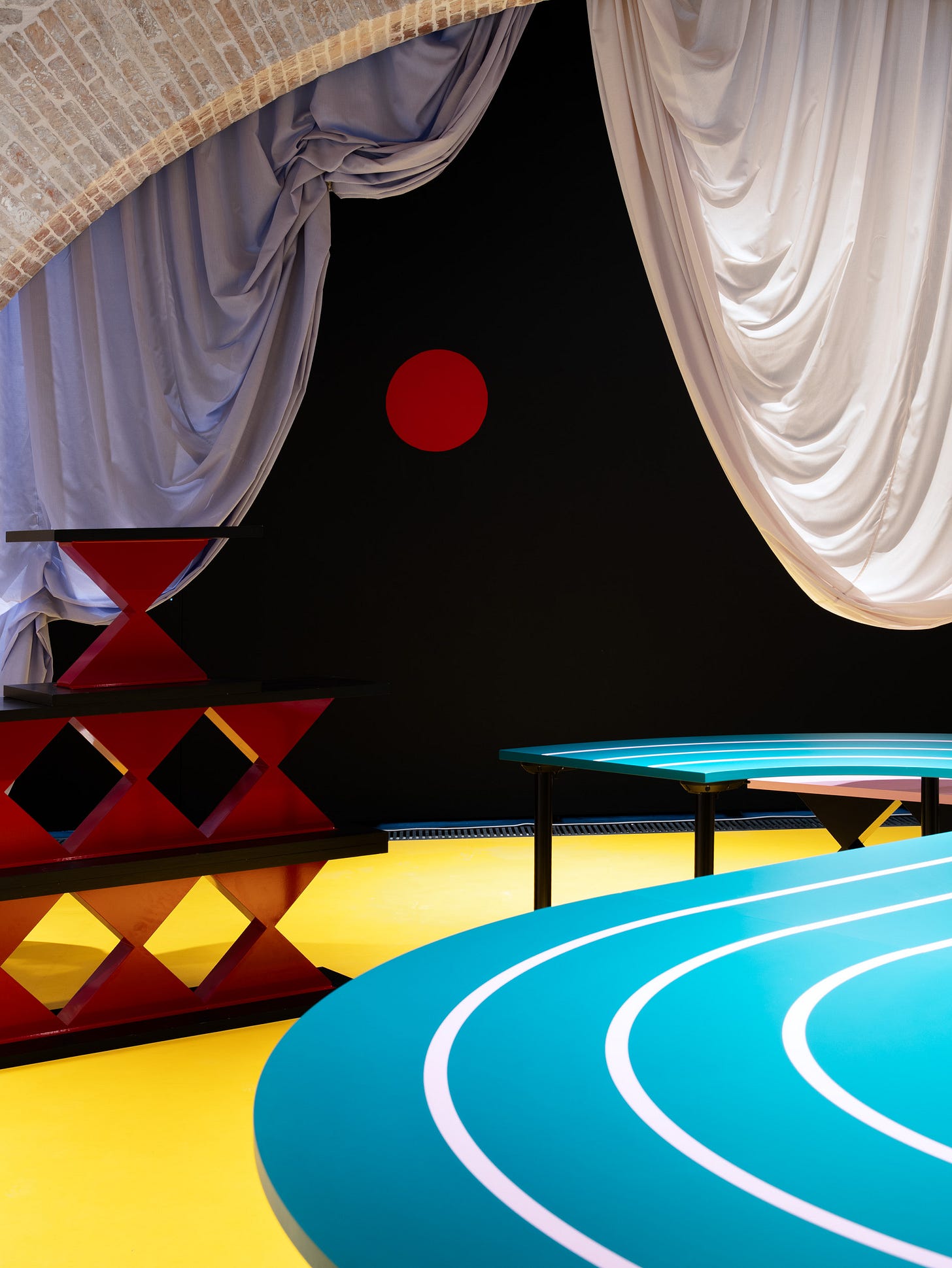A Living Laboratory: Inside Venice’s Scuola Piccole Zattere
We took a day trip to Venice to discover how Scuola Piccole Zattere is redefining public space through play, education, and community collaboration
In a city like Venice, where rapid gentrification and mass tourism have increasingly displaced local communities, accessible public spaces for residents are becoming rare. Historic sites are often repurposed for commercial use, leaving few places where Venetians can gather, create, and exchange ideas. Scuola Piccole Zattere emerges as a necessary intervention—one that reclaims space for locals and fosters a sense of belonging. More than just a venue, it represents a commitment to restoring communal spaces in a city that desperately needs them.
Located on the ground floor of a Venetian palazzo, the space seamlessly integrates with the city, blurring the boundary between public and private. "We wanted the entrance to feel like a continuation of the street," explains Irene Calderoni, contemporary art curator and one of the key figures behind the initiative. With no tickets, barriers, or restrictive rules, the design encourages passersby to step inside, offering an open, welcoming environment where people can read, study, or simply spend time.
At the heart of Scuola Piccole Zattere lies the work of artist Andrea Canepa, whose research into play and its pedagogical value has shaped the space’s design. "For me, play is a way to experiment and question systems in place," she reflects. "It's a safe environment where people can test ideas and interact unexpectedly." Her installation functions as both an artistic statement and a practical feature, bridging the gap between form and function.
Beyond art, the space serves as a hub for education and experimentation. Workshops and performances form a key part of its programming, developed in collaboration with local associations, philosophers, architects, artists, and educators. "We wanted to create workshops that invite the public to engage with the space, rather than just observe it," says Irene. This philosophy extends to artist residencies, where researchers and creatives actively shape the intellectual and creative life of the venue.
A defining feature of Scuola Piccole Zattere is the sala prove, a dedicated room for experimentation. Here, visitors—especially students—can test new ideas, explore creative processes, and contribute to the city that has hosted them during their university years. It also provides a much-needed platform for community-led events, reinforcing the idea that public spaces should be places of active participation, not just passive consumption.
Since its opening in November, Scuola Piccole Zattere has hosted a diverse range of activities. Andrea herself was in residence from November to February, refining her installation and collaborating with young performers from Venice. "We invited students from the performing arts school to interact with the objects, transforming the installation into a living, evolving score," Irene explains. This open-ended approach allows performers and visitors to interpret and reshape the space, reinforcing its dynamic and participatory nature.
Exhibitions are another core element of the program, designed to challenge traditional distinctions between art, architecture, and community engagement. These shows evolve through public interaction, making the space feel less like a static institution and more like a living entity. "It's a place not just for reflection, but for action," Irene emphasizes. "We wanted people to engage with it physically—something you can touch, move, and experience with your whole body."



The educational component extends well beyond the visual arts. Workshops cater to audiences of all ages, from young children to adults. During Andrea’s residency, the space hosted a particularly lively workshop where children between the ages of three and eleven transformed her installation into an energetic playground. "It was both guided and completely out of control," she laughs. But that unpredictability is part of the magic—revealing how different groups interact with the space in their own ways.
Through its evolving architecture, dynamic programming, and commitment to accessibility, Scuola Piccole Zattere is redefining what a public space can be in Venice. By bringing together artists, researchers, and local residents, it challenges traditional notions of what an institution should be—offering an open, interactive environment where creativity and community-building go hand in hand. As Irene puts it, "When you create a space for play and exploration, new possibilities start bubbling to the surface. And that is exactly what Venice needs."




